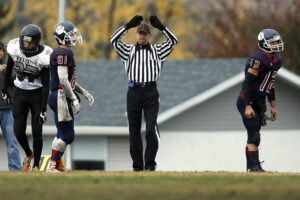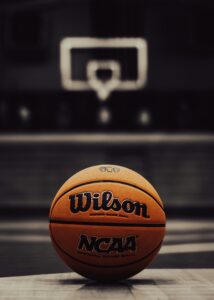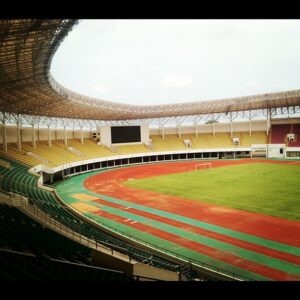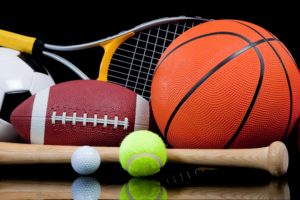By Mary Grace Hutzler
In recent years, Name, Image and Likeness (NIL) regulations have been a source of dramatic change in the landscape of high school athletics.[1] These regulations, which are a much-needed change from the burdensome rules of the past, enable student-athletes to profit from their personal brands.[2] The NIL debate erupted when collegiate players were finally given the chance to earn money through endorsements, sponsorships, and other opportunities.[3] However, the position for high school athletes, particularly in North Carolina, is still difficult.[4] A recent lawsuit filed in Wake County has brought this intricacy to light,[5] and we could soon see significant changes to the NIL rights of public high school athletes across the state.
Current NIL Laws in North Carolina
Following the Supreme Court’s landmark decision in NCAA v. Alston[6], the National Collegiate Athletic Association (NCAA) implemented an interim policy that lifted the previous restrictions on student-athletes receiving endorsement benefits.[7] While collegiate athletes in North Carolina now have greater autonomy in controlling and profiting from their personal brand, the situation remains more restrictive for high school athletes. In 2023, the North Carolina High School Athletic Association (NCHSAA), which governs public high school athletics, passed a policy that allows student-athletes at public North Carolina high schools to profit from NIL deals.[8] This effort was quickly met with push-back from the State as the legislature passed an amendment stripping the NCHSAA of their power to regulate NIL activities.[9] This act transferred the authority to regulate these activities to the North Carolina State Board of Education.[10] On July 1, 2024, the State Board enacted a controversial policy banning student-athletes at public schools from entering into most NIL agreements.[11]
Much of the concern over NIL benefits lies in the risk of creating an uneven playing field for high school athletes by favoring those at larger schools in more affluent areas.[12] However, in their attempts to prevent this disparity, the State Board’s ban has created an even larger one.[13] Athletic programs at private schools in North Carolina are governed by their own athletic association which implemented a policy earlier this year allowing their students to participate in NIL agreements.[14] This makes North Carolina the only state in which private school student-athletes are afforded the privilege to profit off their name, image and likeness while public school student athletes are prohibited from doing the same.[15] Additionally, there has been a recent influx of legislation passed in other states allowing NIL deals for high school athletes, and 38 states now permit this practice.[16] The State Board’s ban has thus inadvertently created an incentive for high-performing student-athletes to transfer to private schools, move to different states, or graduate early in order to benefit from lucrative NIL deals.[17] Student-athletes who are not afforded the luxury of making these changes remain at a disadvantage as they lose out on the ability to monetize their personal brand.[18] This disparity has fueled the ongoing debate about fairness and equity in high school athletics.[19]
The Rolanda Brandon v. North Carolina State Board of Education Lawsuit
The mother of five-star high school quarterback Faizon Brandon recently filed a lawsuit against the State Board of Education to challenge their ban on NIL deals for public high school athletes.[20] In the complaint filed in Wake County, Rolanda Brandon argues that these regulations unfairly restrict the rights of high school athletes to benefit from their own names, images, and likenesses¾rights that are guaranteed to other individuals, including collegiate athletes, under state and federal law.[21] Brandon’s case points to the current inequality between public and private school athletes as well as the ban’s inconsistency with the legislation of most states as a glaring illustration of the unjust divide that results from restrictive NIL regulations.[22]
While the complaint touches on commonly cited constitutional issues surrounding NIL regulations, namely the restriction on one’s right to publicity and right to contract, the cause of action is rooted in a different legal argument.[23] Brandon contends that the State Board did not possess the legal authority to enact an outright ban on NIL activities.[24] The argument ultimately comes down to the interpretation of the language used in Senate Bill 452 which directed the State Board to adopt rules governing “student amateur status requirements, including rules related to the use of a student’s name, image and likeness.”[25] Brandon argues that the legislature’s choice to include the word “use” indicates that it did not anticipate that the State Board would ban all use of student-athletes’ NIL, only that they would regulate it’s use.[26]
The success of Brandon’s argument is uncertain as it must overcome the generous discretion courts typically grant to government agencies.[27] The NIL market for high school athletes is largely uncharted territory in North Carolina, which generates a level of concern that the court may find justifies the temporary ban.[28]
The Future of NIL Laws in North Carolina
Regardless of the legal outcome of Brandon’s lawsuit, it seems increasingly likely that North Carolina NIL laws will be changing in the near future. Shortly after the lawsuit was filed, the State Board heard a proposal involving changes to the current rule that would allow public high school athletes to benefit from NIL deals, effectively reversing the current ban.[29] In a major step towards change, the Board advanced the proposed rule to a public comment period and a vote has been scheduled for January of next year.[30]
The current system is under significant pressure as student-athletes are grappling with the decision to leave the public school system to reap the financial benefits of NIL elsewhere.[31] A change in the law that would bring North Carolina in line with the overwhelming majority of states would thus benefit both student-athletes and public schools. As North Carolina navigates the complexities of NIL regulations and grapples with the implications of recent legal challenges, it stands to redefine the landscape of high school athletics in the state, ensuring that all athletes have equal access to the opportunities that come with their name, image, and likeness.
[1] Adam Epstein et al., An Evolving Landscape: Name, Image, and Likeness Rights in High School Athletics, 77 Vand. L. Rev. 845, 889 (2024).
[2] Id. at 849.
[3] Id. at 855.
[4] Id. at 861.
[5] Complaint, Brandon ex rel. F.B. v. N.C. State Bd. of Educ., No. 24CV026975-910 (N.C. Super. Ct. Aug. 23, 2024).
[6] NCAA v. Alston, 141 S. Ct. 2141 (2021) (holding that the NCAA’s restrictions on education-related benefits were in violation of antitrust laws).
[7] Epstein, supra note 1, at 855.
[8] Juli Kidd, NCHSSA Board of Directors Concludes Spring 2023 Meeting, North Carolina High School Athletic Association (May 3, 2023), https://www.nchsaa.org/nchsaa-board-directors-concludes-spring-2023-meeting/.
[9] Angela Doughty, Whistle Blown: Time Out on North Carolina Student Athlete NIL Deals, JD Supra (July 13, 2023), https://www.jdsupra.com/legalnews/whistle-blown-time-out-on-north-1117565/; see also 2023 Bill Text NC S.B. 636 (establishing oversight of high school interscholastic athletic activities).
[10] S.636, 2023 Gen. Assemb., Reg. Sess. (N.C. 2023).
[11] Shaquira Speaks, No More NIL for NC Public High School Athletes Under State Board Decision, Queen City News (June 14, 2024, 10:31 PM), https://www.qcnews.com/news/u-s/north-carolina/no-more-nil-for-nc-public-high-school-athletes-under-state-board-decision/.
[12] Brayden Stamps & Gretchen Stenger, Proposed Rules Would Allow NIL for Public High School Athletes in North Carolina, Fox8 WGHP (Sept. 5, 2024, 11:55 AM), https://myfox8.com/sports/triad-high-school/proposed-rules-would-allow-nil-for-public-high-school-athletes-in-north-carolina/.
[13] See Grace Raynor, How a 5-star QB Could Change North Carolina’s NIL Laws: What I’m Hearing in CFB Recruiting, The Athletic (Sept. 18, 2024), https://www.nytimes.com/athletic/5773853/2024/09/18/north-carolina-nil-recruiting-faizon-brandon/?searchResultPosition=8.
[14] NC Private School Leaders Approve Policy Allowing Athletes to Profit Off NIL, WBTV (Feb. 2, 2024, 2:58 PM), https://www.wbtv.com/2024/02/02/nc-private-school-leaders-approve-policy-allowing-athletes-profit-off-nil/.
[15] Braly Keller, High School NIL: State-by-State Regulations for Name, Image and Likeness Rights, Opendorse (Sept. 16, 2024), https://biz.opendorse.com/blog/nil-high-school/.
[16] Id.
[17] Francesca Casalino, Call to the Bullpen: Saving High School Student Athlete Name, Image, and Likeness Rights, 29 Jeffrey S. Moorad Sports L.J. 263, 283 (2022).
[18] Id.
[19] See Raynor, supra note 13.
[20] Id.
[21] Complaint, supra note 5, at 7.
[22] Id. at 18.
[23] Id. at 7, 10.
[24] Id. at 5.
[25] S.452, 2023 Gen. Assemb., Reg. Sess. (N.C. 2023)
[26] Complaint, supra note 5, at 1.
[27] Michael McCann, North Carolina Mom’s NIL Suit Tied to ‘Use’ of Law’s Language, Sportico (Aug. 27, 2024, 11:41 AM), https://www.sportico.com/law/analysis/2024/faizon-brandon-university-of-tennessee-recruit-north-carolina-nil-ban-lawsuit-1234794842/.
[28] Id.
[29] Eli Henderson, North Carolina Advances NIL Rule for Public School Athletes, Sports Illustrated (Sept. 7, 2024), https://www.si.com/fannation/name-image-likeness/nil-news/north-carolina-advances-nil-rule-for-public-school-athletes.
[30] Id.
[31] Raynor, supra note 13.





